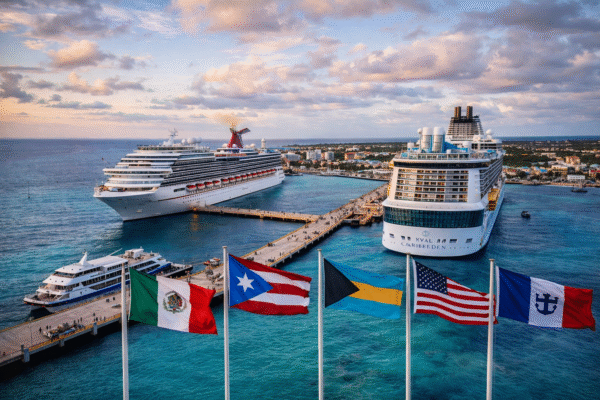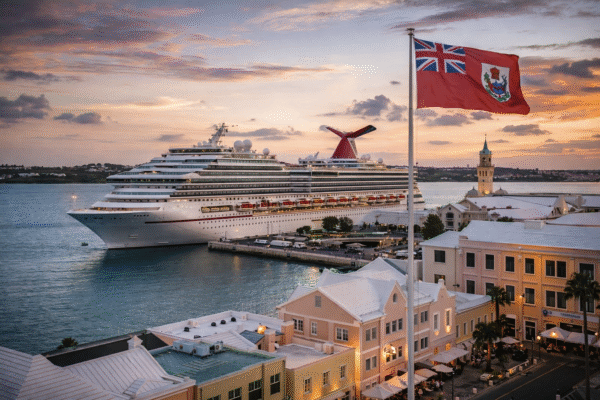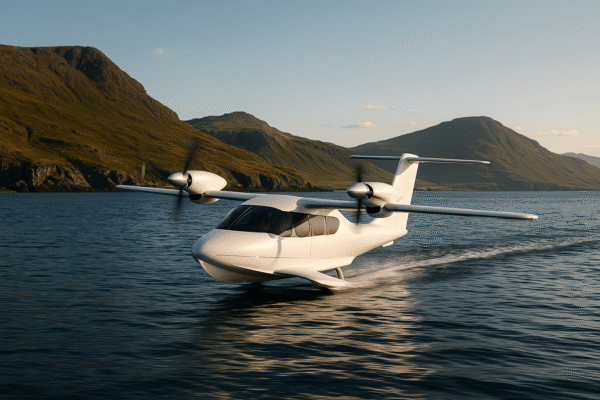Scotland’s Highlands and Islands, known for their rugged landscapes and breathtaking beauty, have long faced challenges when it comes to connectivity. Remote communities, scenic yet hard-to-reach islands, and limited transport infrastructure often result in lengthy journeys for residents and visitors alike. Now, a groundbreaking innovation may change that reality forever.
Regent, a U.S.-based technology company specializing in advanced maritime and aviation solutions, has introduced the Seaglider, an all-electric “flying boat.” Combining the speed of an airplane with the versatility of water-based travel, this revolutionary vessel promises to enhance accessibility while supporting Scotland’s push toward sustainable tourism and greener transport.
The Seaglider: How It Works
Unlike traditional boats or planes, the Seaglider uses a hybrid approach:
- Hull-based gliding: It can operate like a traditional boat, floating and moving directly on the water.
- Hydrofoil lift: It can skim just above the water’s surface using hydrofoils, minimizing drag and increasing efficiency.
- Low-altitude flight: The vessel is capable of flying a few meters above the water, blending maritime and aviation characteristics into a single machine.
This design makes the Seaglider one of the most versatile vehicles ever conceived for short-distance regional travel. Its combination of speed, efficiency, and eco-friendly operation addresses the pressing need for modern transport solutions in Scotland’s remote regions.
Speed, Range, and Capacity
One of the Seaglider’s most impressive attributes is its performance. The all-electric vessel is designed to travel up to 180 miles on a single charge, with a maximum cruising speed of 180 miles per hour. This makes it ideal for short-haul connections across islands and coastal routes, cutting travel times dramatically compared to ferries or road-based alternatives.
The craft is designed to carry 12 passengers, two crew members, and up to 1,600 kilograms of cargo. This balance of capacity and performance ensures the Seaglider will be useful not only for tourism but also for local communities needing reliable transport for goods and essential services.
Partnership with Scotland’s Transport Authorities
To bring this ambitious project to life, Regent has partnered with Hitrans, the regional transport partnership for the Highlands and Islands. Together, they are exploring how Seaglider operations could be integrated into existing infrastructure. The goal is to create a seamless network that connects remote communities, boosts tourism, and provides a sustainable alternative to traditional transport.
For Scotland, which has committed to ambitious climate goals, the Seaglider represents a tangible step toward reducing carbon emissions from transport. By replacing fossil-fuel-heavy travel options with electric-powered innovation, the country can strengthen its reputation as a global leader in sustainable tourism.
Tourism Benefits for the Highlands and Islands
The Scottish Highlands and Islands are home to some of the most iconic tourist destinations in the world, from the Isle of Skye to Orkney and the Outer Hebrides. Yet accessibility has always been a limiting factor in realizing their full tourism potential.
With the Seaglider, these destinations could become more accessible than ever. Tourists would be able to reach remote islands faster, reducing the time spent in transit and maximizing their experience. For local businesses—hotels, restaurants, and attractions—this increase in visitor flow could provide significant economic benefits, particularly during peak tourism seasons.
Additionally, the eco-friendly nature of the Seaglider aligns perfectly with growing global demand for sustainable travel experiences. Tourists increasingly seek low-carbon ways to explore the world, and Scotland could position itself at the forefront of this movement by adopting cutting-edge, environmentally conscious transport.
Ongoing Development and Trials
The Seaglider is currently undergoing rigorous sea trials, with testing phases designed to refine its safety and performance. When complete, it will measure 55 feet in length with a 65-foot wingspan, making it the largest all-electric “flying machine” of its kind.
By combining advanced engineering with practical applications, Regent aims to demonstrate that large-scale electric transport is both feasible and efficient. Once trials are complete and certifications obtained, Scotland could become one of the first regions in the world to adopt this transformative travel solution.
Broader Implications for Global Travel
While the immediate focus is on Scotland, the applications of the Seaglider extend far beyond the Highlands and Islands. Remote and coastal communities around the globe—from Alaska to Southeast Asia—face similar challenges with connectivity. The Seaglider’s ability to provide quick, direct, and emission-free travel makes it a model that could be replicated worldwide.
For the aviation and maritime industries, the project is also a bold signal. By merging technologies from both sectors into a single vessel, Regent is setting new standards for what regional transport could look like in the decades ahead.
Environmental Commitment and Policy Alignment
The Seaglider is more than just a technological innovation—it is also a response to urgent environmental priorities. Scotland, with its strong commitment to net-zero targets, has made sustainable transport a cornerstone of its long-term strategy. The adoption of electric-powered solutions like the Seaglider not only supports these goals but also enhances Scotland’s image as a responsible global tourism destination.
The Future of Regional Travel in Scotland
The vision for the Seaglider goes beyond speed and convenience. It represents a complete reimagining of how remote regions connect, how tourists experience Scotland, and how businesses operate in areas long underserved by traditional transport.
By offering an affordable, efficient, and green alternative to ferries, cars, and short flights, the Seaglider could usher in a new era of regional travel—not only in Scotland but also in coastal regions worldwide.
As development continues and the partnership with Hitrans evolves, the prospect of a fully integrated Seaglider network in the Highlands and Islands is becoming increasingly realistic. For Scotland, this could mark the beginning of a tourism and transport revolution that blends innovation, sustainability, and accessibility in equal measure.
For more travel news like this, keep reading Global Travel Wire



















